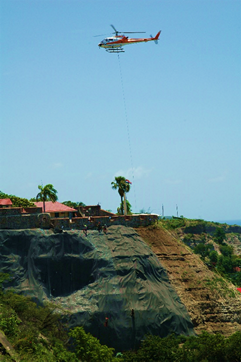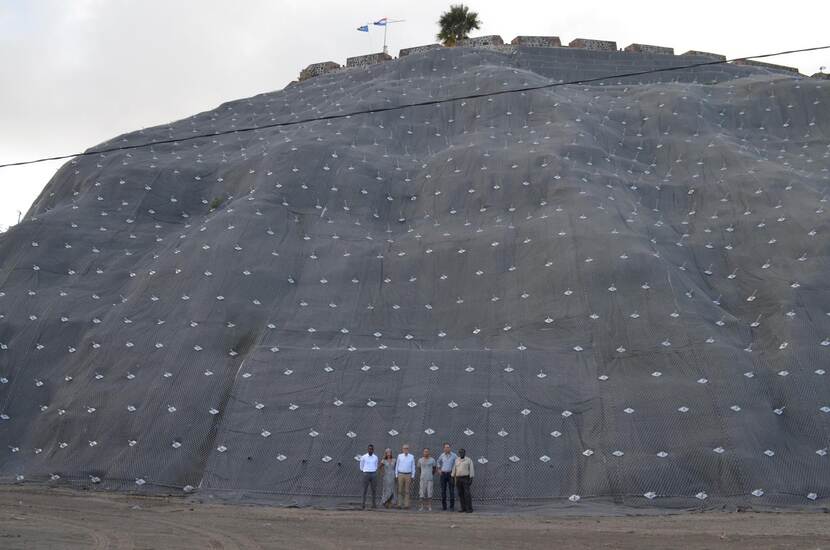Cliff stabilization project Fort Oranje nears completion
In May 2020, the stabilization works on the cliff supporting Fort Oranje, will finish. Since February 2019, 2,800 anchors, 7,400 square meters of canvas and just under 16.000 square meter of mesh have been placed. The project is meant to increase stability and stop the eroding of the cliff for the next decades.
Over the last year, the French acrobats abseiling down the cliff, has become an all too familiar sight for Statia. Their expertise in cliff stabilization in France make them the ideal team for the job. An important difference with their work here on Statia is that, in the homeland of AcrobatX, it is mainly about combating falling rocks. On Statia, it is important to stop erosion, in order to prevent the national landmark Fort Oranje from tumbling down.
The cliff on which the fort stands, consists of various layers of volcanic stones and ashes, pressed together. This type of cliff is very sensitive to erosion. Cavities have been created, by groundwater seeping through the cliff, as well as by rain and wind. Loose roaming goats play a major role in erosion too. They hide and sleep in the holes, but also create paths in the fine ash material of the cliff. Over time, cracks form along those paths, causing parts of the cliff to break off.
A lot of time was spent into adjusting the shape of the cliff, to smooth out holes and cracks. After placing the metal tube anchors, which are up to 20 meters long, cement is injected, to fix a them into the cliff. To ensure that the anchor is properly secured, tests with a force of 250 tons are executed. The multilayered canvas bolted onto the wall is to protect it from further eroding. The outer layer of mesh and canvas is intended to prevent the possible movements of soil and retain sand and seeds. Lastly, Oleanders and Beach Morning Glory are planted. “I am relieved we have been able to safeguard our landmark Fort Oranje for the years to come. Special thanks to St. Eustatius National Park Foundation (STENAPA), who will restore the natural face of the cliff, by planting plants that come from our local Statian habitat” says deputy Government Commissioner Alida Francis.
Only a minor delay was suffered, because in the final stage of the project, the material had to be placed by hand, instead of by helicopter. Due to the Covid 19 response measures, the pilot of the helicopter that installed the mesh during the earlier phases could not reach the island. What remains now is to remove the sand, stones and sludge from the reservoir at the bottom of the cascade. This will be done by a local contractor. Fort Oranje is expected to reopen at the end of May 2020. Hopefully, in the not too distant future, important events such as Statia Day can once again be held there.

